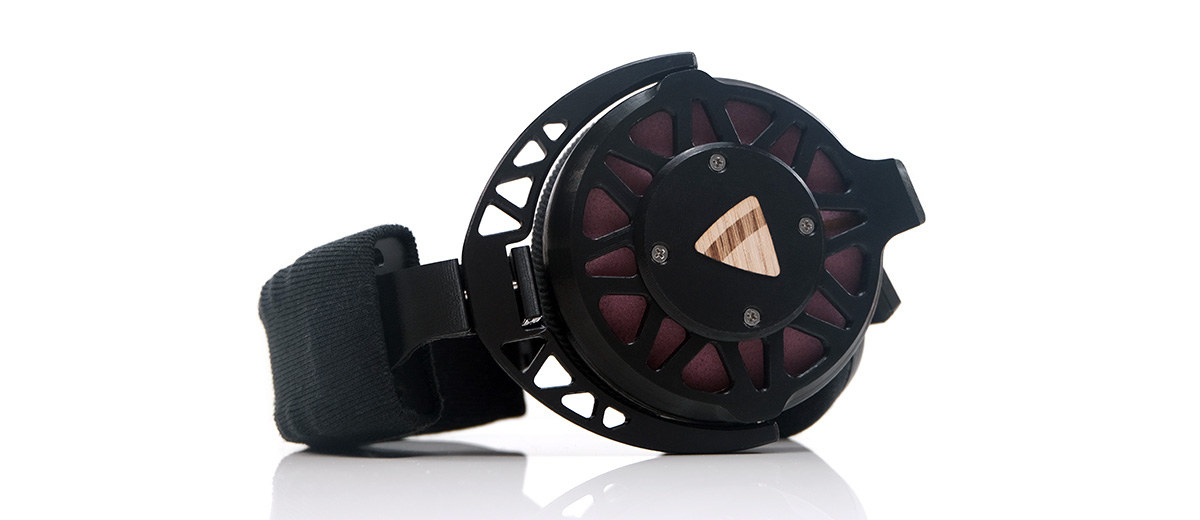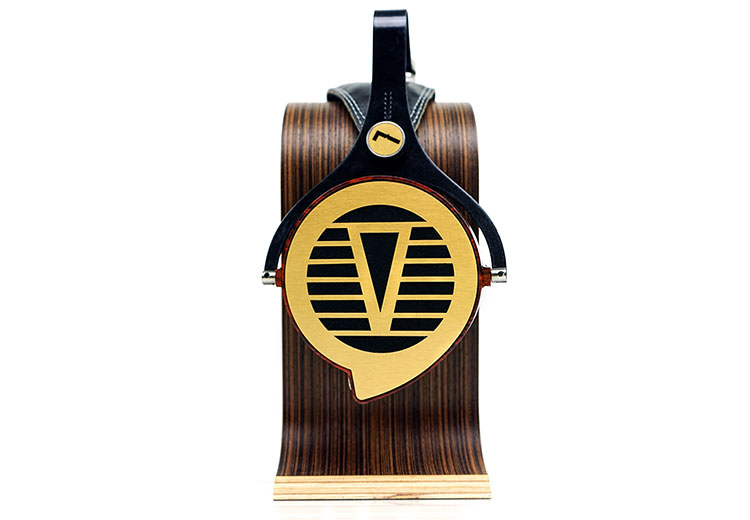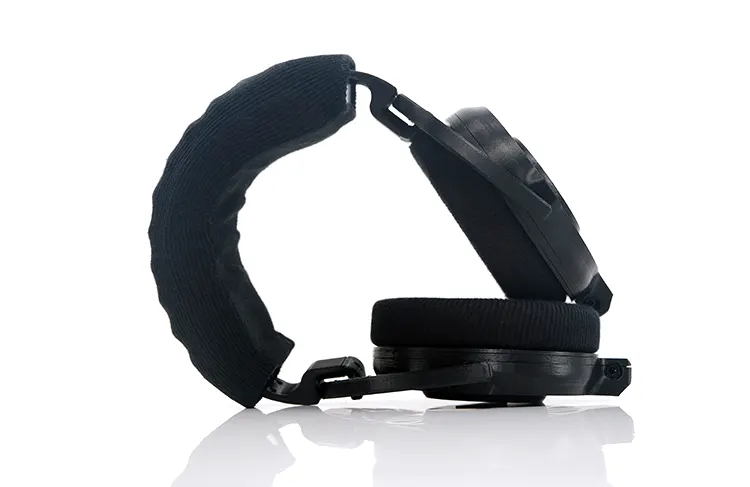Selected Comparisons
Since the PLOOPY Headphones are a very unique set of headphones there is no direct comparison. The closest we have here is the boutique-made Verum Audio Verum 1 and a similarly priced HIFIMAN Deva Pro.
Note, the comparison using the K9 Pro ESS would mean the PLOOPY Headphones are being considered with its stock tuning without any EQ adjustment and then with some EQ comments using the accompanying PLOOPY USB DAC/amplifier.
HIFIMAN Deva Pro
The HIFIMAN Deva Pro was launched in 2022 and picked up our Bang For Buck 2022 Best Headphones Award. The wired version is currently priced at the same $199 as the PLOOPY Headphones.
Technical
Both are open-back planar headphones but you could almost call it a day here in terms of sensible comparative conclusions given the PLOOPY is a boutique DIY creation and the Deva Pro has benefitted from years of trickle-down R&D from HIFIMAN.
We are talking stealth magnet arrays combined with a super-thin NEO “supernano” diaphragm, (NSD) versus a 400um thick diaphragm thickness and a more basic symmetrical single-sided 6-piece magnet implementation.
Of course, the Deva Pro driver and acoustical setup are proprietary. If it fails you have to send it back to HIFIMAN for repair or replacement.
You have a choice with PLOOPY with the same warranty for 1 year or if you are capable you can simply order new PLOOPY parts to repair the headphones yourself. Or better yet just make a new one if you are 3D Printer proficient and shift the consumable parts from the old to the new.
Similar to the PLOOPY Headphones the Deva Pro has a modular accessory but it’s a BT Wireless R2R DAC/amp module. You can EQ wirelessly but it’s going to be entirely 3rd party software-driven and not as resolving or as dynamic as the wired equivalent. Still, I find it very useful to have the Deva Pro wire-free in the office.
The PLOOPY USB DAC/amp is wired-only but far more critical for performance as the stock signature without EQ is a bit ‘whack’ and via the Toolbox software, you get oversampling capability.
Design
It is a similar theme here in terms of materials used and finishing. The form factor is a similar classic round cup and single headband approach but the PLOOPY looks rough beside the Deva Pro. It is also much bigger and weighs 60g more.
Aesthetically, the Deva Pro is very much the finished commercial product. I have always liked the looks of the Deva Pro and looks spot on for its price point.
Granted it skimps on a few areas such as silvery-dense plastics for the pivot blocks but they blend almost perfectly with the anodized aluminum gimbals, large silver screws, and cup grills.
The PLOOPY Headphones finish is rawer given its 3D printed origins. However, it is creak-free unlike some early Focal headphones, and just as articulated on the pivot blocks. Also, you may be surprised to know it’s a more comfortable fit than the Deva Pro
Much of that has to do with the fabric outer on the headband and ear pads. The Deva Pro uses hybrid pleather and fabric pads and feels firmer on the side of the head compared to the Ploopy.
The pressure balance is adjustable with the FlexBar on the PLOOPY Headphones. The Deva Pro clamps a bit better whereas the PLOOPY has a fairly weak clamp.
One final design note is on the cable. Both are TRS 3.5mm terminated on both ends but because of the channel wiring on the PLOOPY, you use a standard 3.5mm “AUX cable” rather than a traditional headphone cable.
Performance
The Deva Pro is also more sensitive at 91.1 dB/mW SPL compared to a very low 70 dB equivalent from the PLOOPY Headphones. You need a lot more current than you think to get any decent volume from the PLOOPY design compared to the Deva Pro.
I initially thought the K9 Pro ESS would be a reasonable setup to get the PLOOPY singing but the headroom for a decent volume was not there. I went out on a limb and tried the high-end Feliks Audio Envy which can churn out close to around 7W at 20Ω and that provided a much improved level of headroom.
You don’t have to try an expensive amp, a solid Topping or SMSL equivalent sub $500 will likely give you similar headroom. You just have to be careful with distortion because, unlike the Deva Pro, the PLOOPY will distort quite quickly if you feed it too much gain, especially around the 50Hz marker.
Timbre
Tonally, the Deva Pro is much more neutral to slightly dry in its presentation compared to the PLOOPY’s performance without its amplifier. The Deva Pro bass performance is flat and quite linear with more of a 1k emphasis and some lower treble energy.
You will not get huge depth here but it’s quite well-controlled with decent separation and average imaging with the stock SE cable. Your ear will rest a little more on the mids and highs though in terms of prominence.
The PLOOPY stock tuning is hugely v-shaped in comparison with a massive 50Hz emphasis and countered by an equally strong mid-treble bump.
It’s much heavier on the lows and will sound deeper compared to the Deva Pro. Everything in between will sound comparatively distant and diffuse, particularly in the lower mids and vocal presence. Distortion on the lows is a huge risk with increasing levels of gain whilst the treble and percussion timbre are not hugely refined.
Switching to the PLOOPY amplifier immediately remedies a lot of that 50Hz bulge and mid-treble peaking. We now have a longer but gentler bass shelf from 50Hz up to around 100Hz taking a lot of that potential distortion out of the equation. The treble is also a lot smoother with better lower mids and vocal presence.
It now sounds a lot more natural to my ear, much more balanced, and on a tonal level not as dry sounding compared to the stock Deva Pro coloration.
The only problem is the volume level from the amp which is still too low. Even with the Tookbox software, the controllable gain range is limited whereas the Deva Pro driver can handle a lot more.
Verum Audio Verum 1
The Verum Audio Verum 1 was initially launched in 2018 and won our Bang For Buck Best Headphones award for the same year. It is now on a second-generation design in 2023 and this comparison is based on the V1 we have here in the office.
Technical
Another open-back planar headphone and this is a home brew or boutique creation and closer to the PLOOPY Headphones vibe rather than trickled down from established R&D practices similar to HIFIMAN.
That being said, I do believe the Verum 1 is more advanced in terms of driver implementation, or at least more ambitious for its raw material and construction.
This is a double-sided magnetic design with an 82mm membrane housed inside a cup measuring 107mm in width with 105mm magnetically fitted ear pads sitting on top.
It looks like a much bigger driver than the PLOOPY version and a more complex magnet arrangement that improves on the Verum 1 sensitivity and efficiency, something that is lacking a bit on the PLOOPY.
Verum Audio has deployed 3mm magnets on either side of a 7mm serpentine trace coil membrane inside the Verum 1 The membrane itself consists of a mix of 8um of mylar and 8um of aluminum.
Neither of these has a nano-grade thickness to their diaphragms but I would presume it’s thinner than the PLOOPY implementation. The one benefit of a slightly thicker trace is less likely to break before, during, or after production. That’s critical for costs in a boutique firm.
Design
The Verum 1 sample we have here is the V1 with V2 having a more svelte headband construction, (less Frankenstein-ish), and a Fibonacci theme to the cup grills. Still, both look boutique to me though not as hardcore boutique as the PLOOPY Headphones.
The Verum 1 makes more use of polycaprolactam, (Bubinga here), leather, and CNC aluminum compared to the 3D-printed plastics and fabrics of the PLOOPY Headphones. It is a proprietary design meaning if things go wrong it has to go back to Ukraine and that’s a whole new story right now for reliable shipping.
Though about the same size the PLOOPY Headphones are also lighter by 100g courtesy of the 3D-printed plastics. I must mention though that the V2 is reduced from 520g to 480g but it is still the heavier of the two.
The PLOOPY headphones are also a good deal comfier though with weaker lateral clamping. The adjustment system for the Verum 1 Version 1 headband is somewhat convoluted with its screw-tight adjusters on the top and sides though the V2 has streamlined the top adjuster.
With the PLOOPY, once you pick the right FlexBar it works like any normal headphone’s headband adjustment system.
If I am not mistaken the Verum 1 V2 now uses 3.5mm TRS jack connectors similar to the PLOOPY headphones whereas the V1 used 2.5mm mono plugs. That should make it a more durable connection system and is headphone cable-swappable, unlike the PLOOPY headphones channel wiring setup which uses a standard 3.5mm AUX cable.
Performance
The Verum 1 is rated at just 10Ω and 96 dB/mW which is a good deal more sensitive than the 20Ω and 70 dB/mW rating of the PLOOPY Headphones.
Unlike the PLOOPY, the Verum 1 is less likely to distort below 50Hz under higher gain conditions and is more flexible for amplifier pairing though it does enjoy an amplifier more with good headroom.
Timbre Stock
Tonally, the Verum 1 offers a flatter bass performance and is not that dissimilar to the Deva Pro with a slight sub-bass roll-off and more lower-mids emphasis. It does shift your focus up a little to midrange instrumentation with vocals and percussion to the fore with some 2-5k emphasis.
It does have a little bit of bite and energy through the lower treble but the fade from 510k is generally quite linear and smooth in its drop so not an uneven tone. Rather, the flat but well-extended bass does not add a huge amount of warmth to the overall performance.
In stock mode, the PLOOPY’s v-shaped and hyper-elevated low-end give it a very different presentation.
It’s a roomier soundstage but also one that is much more diffuse so lower-mids and some vocal imaging can be very far behind that sub-bass gain level when the lows get busy. Higher pitching vocals and percussion do better though they can be a little lean and ethereal sounding.
Distortion, as always, is a step away so finding the right level of power and volume is challenging but if the track is bass-light it’s much easier to manage. Once managed, the PLOOPY does offer more bass presence and enhanced mid-treble peaking.
Timbre with EQ
With the PLOOPY amplifier, you still have that volume issue, perhaps more so than a dedicated amplifier with 3rd party EQ but the tuning curve is now a lot more coherent with a bass profile closer to the flatter response of the Verum 1.
You get a vast reduction of about 20 dB from 50Hz down to 20Hz which helps keep distortion in check as well as a stronger lower-mid tuning which brings a bit more staging focus for me which is something the Verum 1 also does well with.
The mid-bass warmth is still a bit elevated but this helps keep the tuning more to the smooth than dry side. The vocal and percussion body is not as firm and dynamic sounding as the Verum 1 delivery, but the tonal coloration is natural sounding with a welcome reduction in upper mids and treble emphasis.
Our Verdict
The PLOOPY Headphones should be considered a journey of discovery rather than the finished article. You will learn a lot about headphone tuning and indirectly, the capability of your amplifier via these headphones.
Do not be fooled by our relatively modest review score here since as a finished product it’s not yet ready to pick up and go. We simply do not have an easy way of quantifying the subjectively high level of knowledge and enjoyment gained from tinkering and fine-tuning these headphones.
If you are after a set-and-forget headphone experience where you can just plug it into any amplifier and listen to music you will be disappointed by what you get. The stock FR is unusable, the driver is inefficient, and the potential for distortion is high.
If you are a ‘tinker’, an ‘early adopter’, or someone who loves EQ and doesn’t mind a bit of trial and error then the PLOOPY experience is a thoroughly enjoyable one. You will feel involved from the outset and will be rewarded with potentially good sound quality.
If you are savvy with a 3D Printer then there is no limit to what you can do here since the whole project is open source. And perhaps that’s what this is all about. A community-driven open-source product development with full transparency at a relatively low-risk financial outlay.
PLOOPY Headphones Specifications
- Materials: 3D-printed plastic frame and ear cups, fabric cover, foam filling
- Transducer Principle: Open-back, over-ear, planar magnetic
- Frequency Response: 20 Hz–20 kHz
- Sensitivity: 70 dB/mW
- Impedance: 20 Ω
- Cable: Dual 3.5 mm TRS (headphones) to 3.5 mm TRS connector (source)
- Weight (without cable): 420 g
- Warranty: One year




